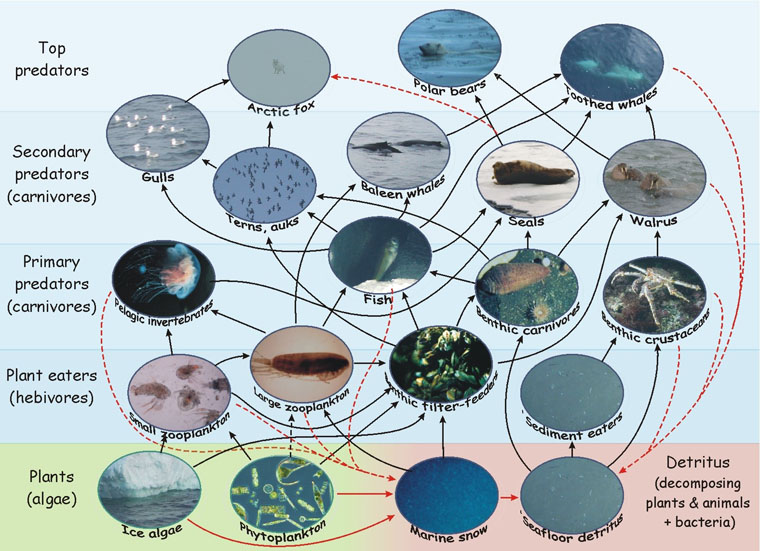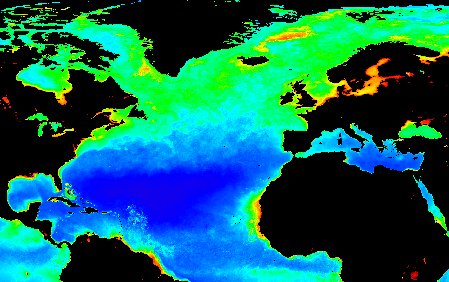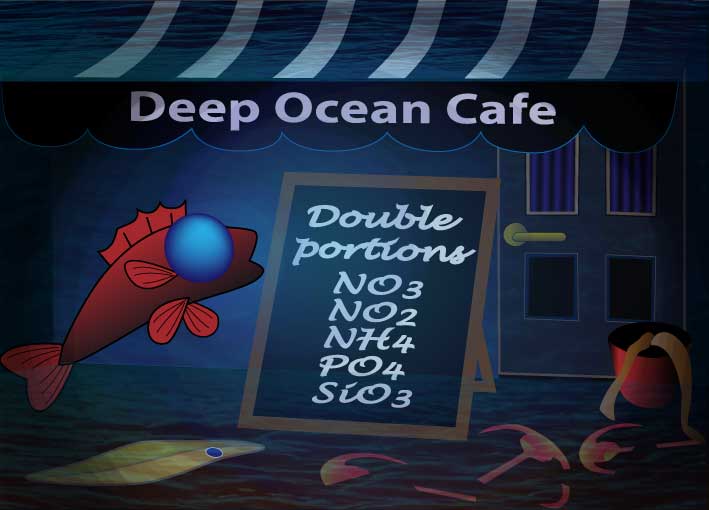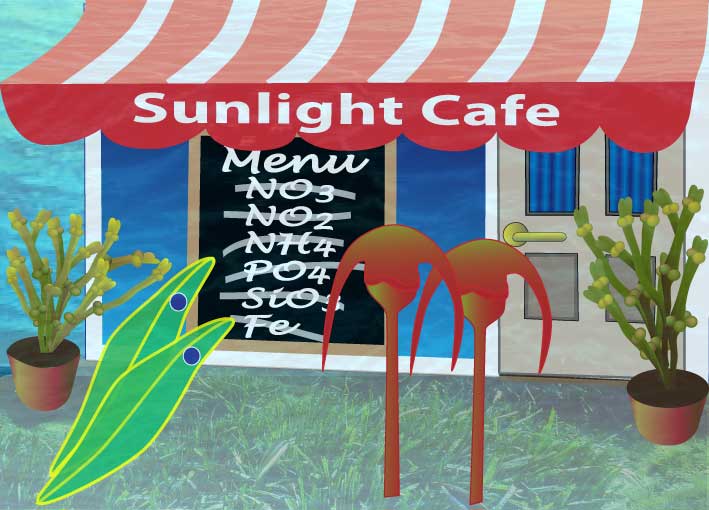4. Phytoplankton: the Grass of the Sea
Marine productivity
Light for photosynthesis is only available in a thin layer near the sea surface - typically 20m or less in turbid coastal water, and no more 150m in the clearest tropical ocean waters.
This means plants that grow on the bottom can only exist near the shore, in shallow waters. In the rest of the ocean most of the plant production is done by the phytoplankton - microscopic plants that float in the sunlit surface zone.
Phytoplankton are the grass of the sea. Marine animals often time their spawning to coincide with periods of strong plankton growth, so that their larvae will have enough food.
- In the image on the left where are the regions of lowest phytoplankton abundance?
- Where is the phytoplankton most abundant?
- What does this imply for fisheries in these areas?
Areas that are rich in phytoplankton are also as a rule full of marine life. This is why ocean colour images of chlorophyll concentration (a measure of phytoplankton abundance) are an essential tool both for understanding marine ecosystems.
Because most animals will thrive where food is abundant, so maps of chlorophyll concentration will also indicate where fish and other marine animals are likely to occur in large numbers.
The arctic food web above has been simplified, but shows how everything depends on phytoplankton - even at the bottom of the sea. Here the food chain starts with detritus (mostly dead phytoplankton), which floats down from the surface as 'marine snow'.
North Atlantic phytoplankton productivity
Limitations on plant growth
The patterns of chlorophyll concentration seen on the image above are explained by the availability of plant nutrients in surface waters, which in turn is closely linked to the system of ocean currents.
On land, plant growth is usually limited by the availability of water, nutrients and light. In the sea, water is clearly not a problem, but the availability of nutrients and light often are. We shall look more closely at some of the reasons for this.
Nutrients and the deep
As they grow phytoplankton use up the nutrients present in the surface waters - nitrate, phosphate and other minerals. When the plankton die they sink slowly down into deep water, where they eventually decompose, releasing their stored nutrients into the waters of the deep ocean.
This uptake of nutrients in surface waters, and re-release through decomposition in deep water, constantly depletes nutrient concentrations in the sun-lit zone inhabited by the phytoplankton.
Plant growth in the ocean is thus dependent on how fast the lost nutrients can be brought back from the depth into surface waters. This can happen through processes such as upwelling (link) and mixing by waves and wind.
In the subtropical gyres the combination of strong solar heating, low winds and slow currents means that there is little mixing between the surface waters and the deep ocean. The return of nutrients to the surface is slow, so phytoplankton populations are low. Thus the gyres show up areas with low chlorophyll in satellite images.





